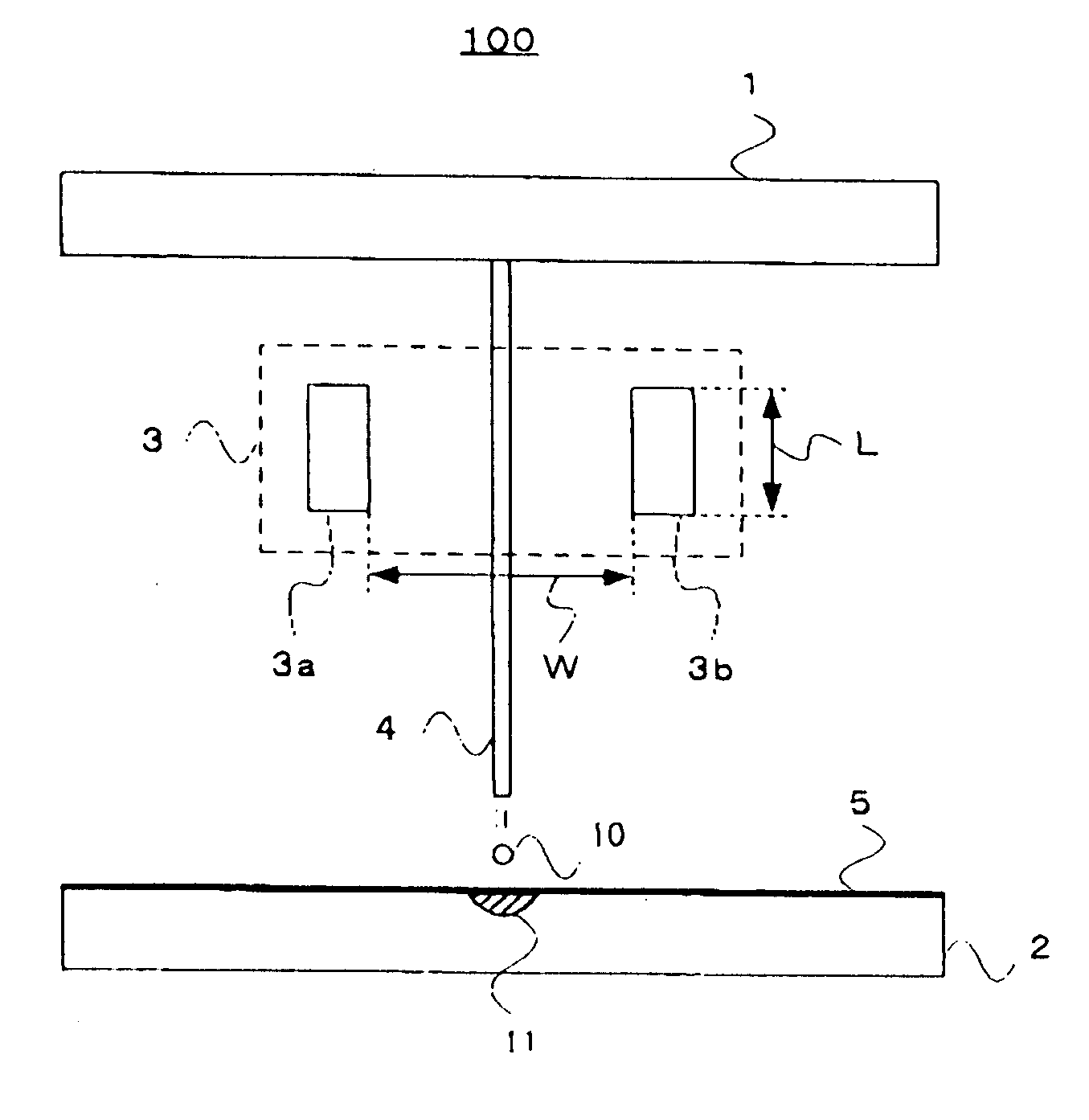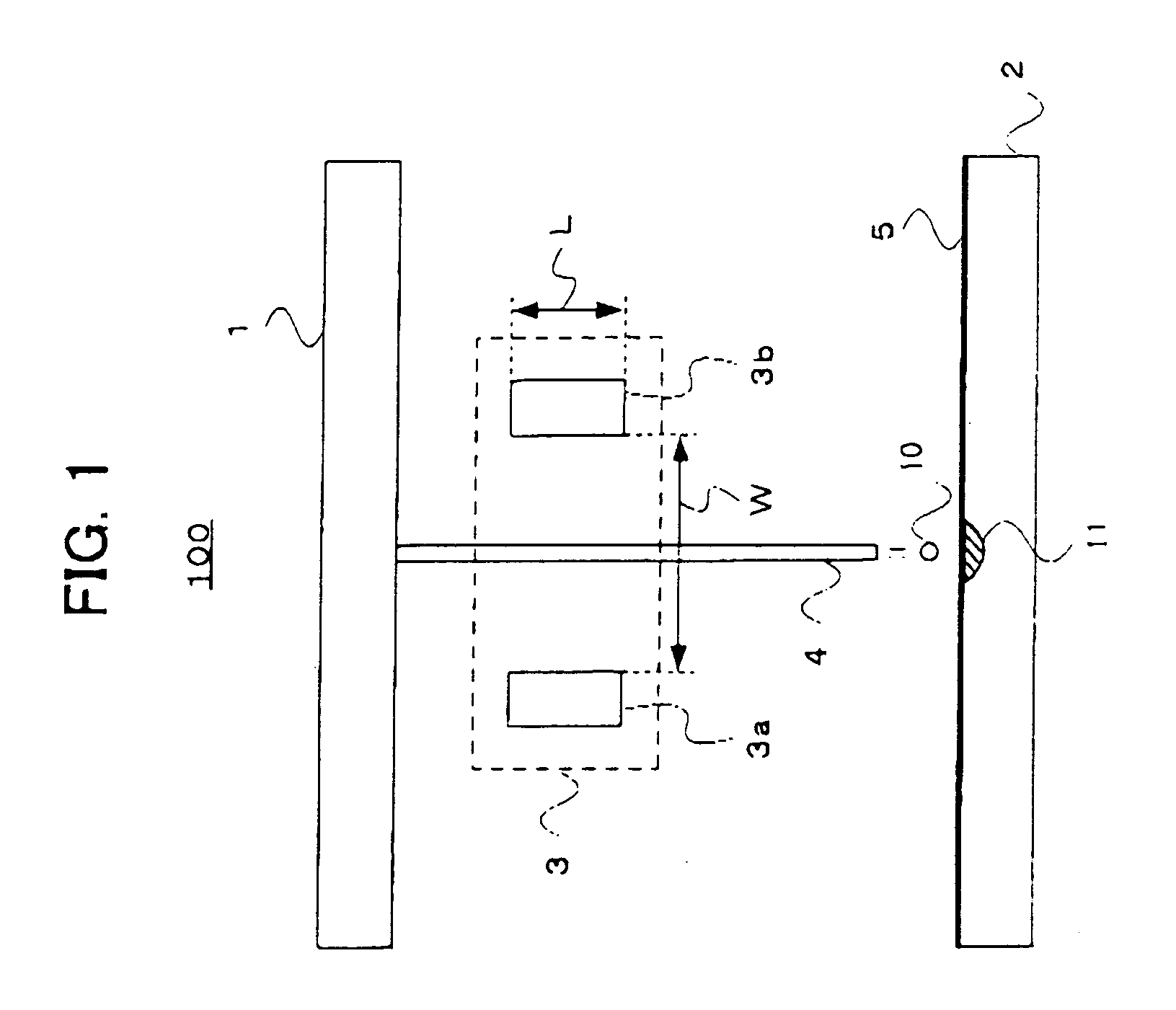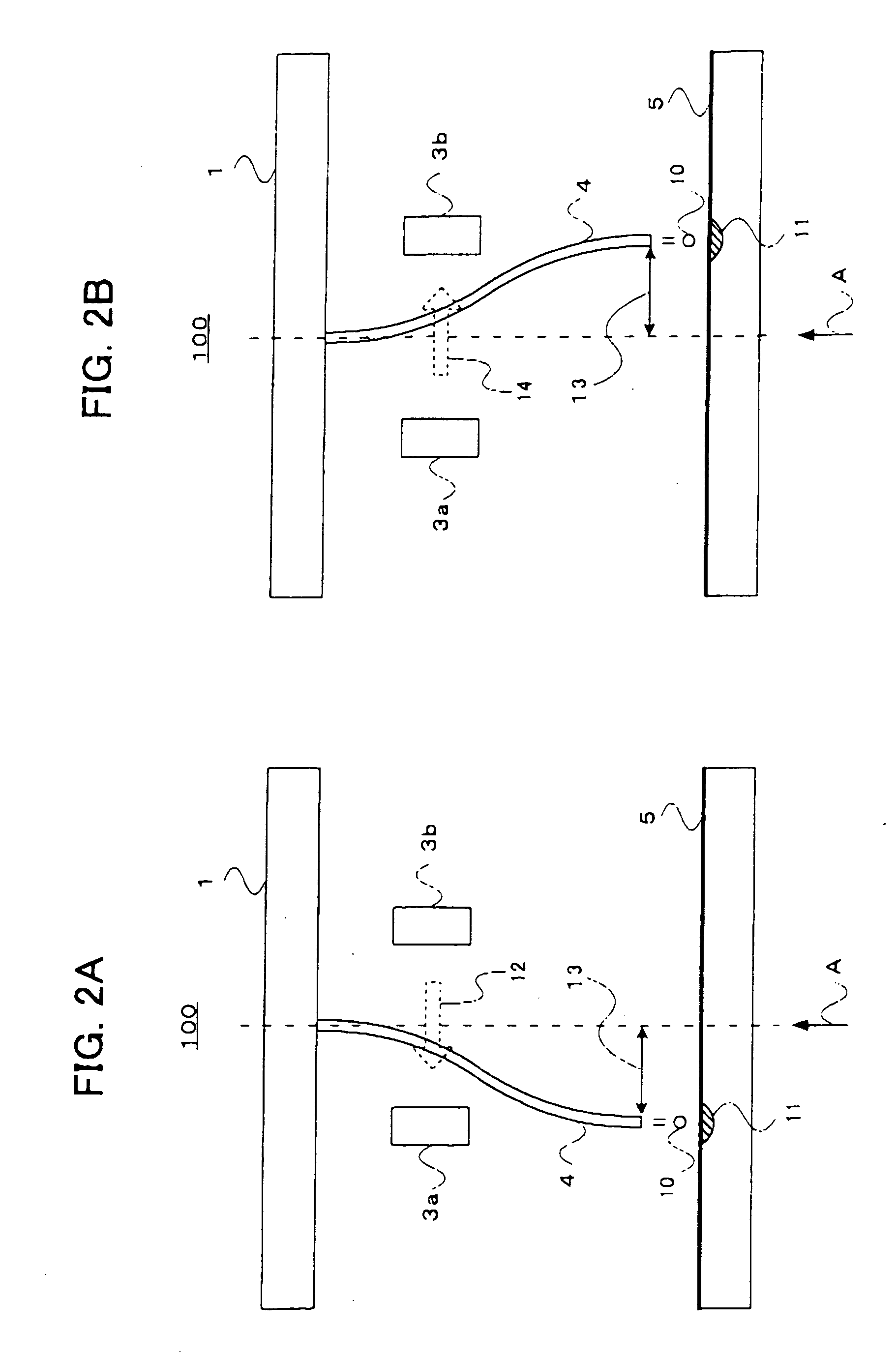Electron emission element
a technology of electron emission element and element, which is applied in the direction of discharge tube/lamp details, discharge tube luminescnet screen, discharge tube main electrode, etc., can solve the problems of complicated driving mechanism, inability to simple configuration of apparatus including electron emission element and the like, and inability to manufacture simple driving mechanism, etc., to achieve simple manufacturing, increase the degree of freedom of displacement of electron emission unit, and low cost
- Summary
- Abstract
- Description
- Claims
- Application Information
AI Technical Summary
Benefits of technology
Problems solved by technology
Method used
Image
Examples
first embodiment
[First Embodiment]
[0022] First, the electron emission element according to a first embodiment of the present invention will be explained with reference to FIG. 1 to FIG. 3. FIG. 1 schematically shows a configuration of an electron emission element 100 according to the first embodiment.
[0023] As shown in FIG 1, the electron emission element 100 includes a cathode substrate 1, an electron draw-out electrode 2, deflection electrode unit 3, an electron source (electron emission unit) 4 and an electron irradiation surface 5.
[0024] The cathode substrate 1 is made of material such as silicon. A voltage is applied to the cathode substrate 1 by a power supply (not shown), and the cathode substrate 1 functions as the cathode (cold cathode) in the electron emission element 100. On the cathode substrate 1, the electron source 4 is formed.
[0025] The electron source 4 functions as the thread-type electron emission unit, and a carbon nano-tube is used as the electron source 4 for example. The c...
second embodiment
[Second Embodiment]
[0035] Next, the description will be given of an electron emission element 101 according to a second embodiment of the present invention with reference to FIGS. 4A and 4B.
[0036] As shown in FIG. 4A, the electron emission element 101 also includes the cathode substrate 1, the electron draw-out electrode 2, the deflection electrode unit 3, the electron source 4, and the electron irradiation surface 5, similarly to the first embodiment. Since the materials and the functions of them in the electron emission element are similar to those shown in the first embodiment, an explanation thereof is omitted.
[0037]FIG. 4B is a diagram showing the electron emission element 101 observed in a direction of an arrow B of FIG. 4A. As shown in FIG. 4B, the electron emission element 101 according to the second embodiment also includes the deflection electrode unit 3 including the pair of deflection electrodes 3a and 3b and the pair of deflection electrodes 3c and 3d around the elect...
third embodiment
[Third Embodiment]
[0040] Next, the description will be given of an electron emission element 102 according to a third embodiment of the present invention with reference to FIG. 5.
[0041] As shown in FIGS. 5A to 5C, the electron emission element 102 includes the cathode substrate 1, the electron draw-out electrode 2, the deflection electrode unit 3, a deflection electrode unit 6, the electron source 4 and the electron irradiation surface 5. The electron emission element 102 according to the third embodiment is different from the above-mentioned electron emission elements 100 and 101 in the first and second embodiments in that the deflection electrodes are provided at two positions in the longitudinal direction of the electron source 4. Since other components of the electron emission element 102 are similar to the above-mentioned components in the first and the second embodiments, an explanation thereof is omitted.
[0042] The deflection electrode units 3 and 6 according to the third e...
PUM
 Login to View More
Login to View More Abstract
Description
Claims
Application Information
 Login to View More
Login to View More - R&D
- Intellectual Property
- Life Sciences
- Materials
- Tech Scout
- Unparalleled Data Quality
- Higher Quality Content
- 60% Fewer Hallucinations
Browse by: Latest US Patents, China's latest patents, Technical Efficacy Thesaurus, Application Domain, Technology Topic, Popular Technical Reports.
© 2025 PatSnap. All rights reserved.Legal|Privacy policy|Modern Slavery Act Transparency Statement|Sitemap|About US| Contact US: help@patsnap.com



